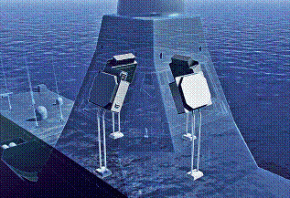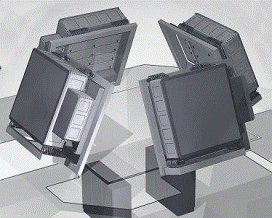Hi David, I'm not sure I fully understood your points in this post, but I have to agree with
@Rangitoto that APAR Block 1 is no longer in production. In other words, that radar shown on the CSC models can't be APAR
block 1. Logic would dictate it is the Indra 25X that
@Rangitoto linked in a previous post, given it and the AN/SPY7 will be fully integrated for the F110, and qualified for the same missile load-out as CSC (ESSM, and SM-x), but those panels are clearly
rectangular, not
square. Also puzzling is the models I have seem of F110 show separate illuminators (SPG-62), so it would appear that the Indra 25X is NOT optimized for the illuminator role, which would seem to rule it out as a candidate, notwithstanding it is also
rectangular in shape. The only X-band radar I have come across that is both square in shape and designed for missile control is the Leonardo Kronos Starfire, but I have no idea if it would support ESSM and SM-x. Leonardo does have a large presence in Canada, however, so this is not totally outside the realm of the possible. Why Canada would choose this system over APAR Block 2 however, which has a large amount of Canadian content, and is purpose designed to support the same missions and missiles, is puzzling, to say the least.
With regards to MDA, they have extensive experience designing and building synthetic aperture radars for Radarsat 1 and 2, and the Radarsat Constellation, so it is possible they could build this radar. Also, MDA is a Tier 1 supplier to CSC, and as such is tasked (among other things) to "Build an advanced radar system critical to the integrated CSC weapons system, which is well positioned to be exported to the global naval market." (Source:
February 8, 2019 - MDA Selected for Design Phase of Canadian Surface Combatant Program, go to second bullet). This suggests MDA is responsible for this radar. That could mean anything from designing and building to sourcing, however, so until the CSC final design details become public we will probably not know for sure the make and model of this radar. However, I think we can be fairly certain that whatever is chosen it will be top-of-the-line kit, given the selection of the AN/SPY-7.





